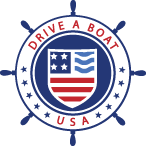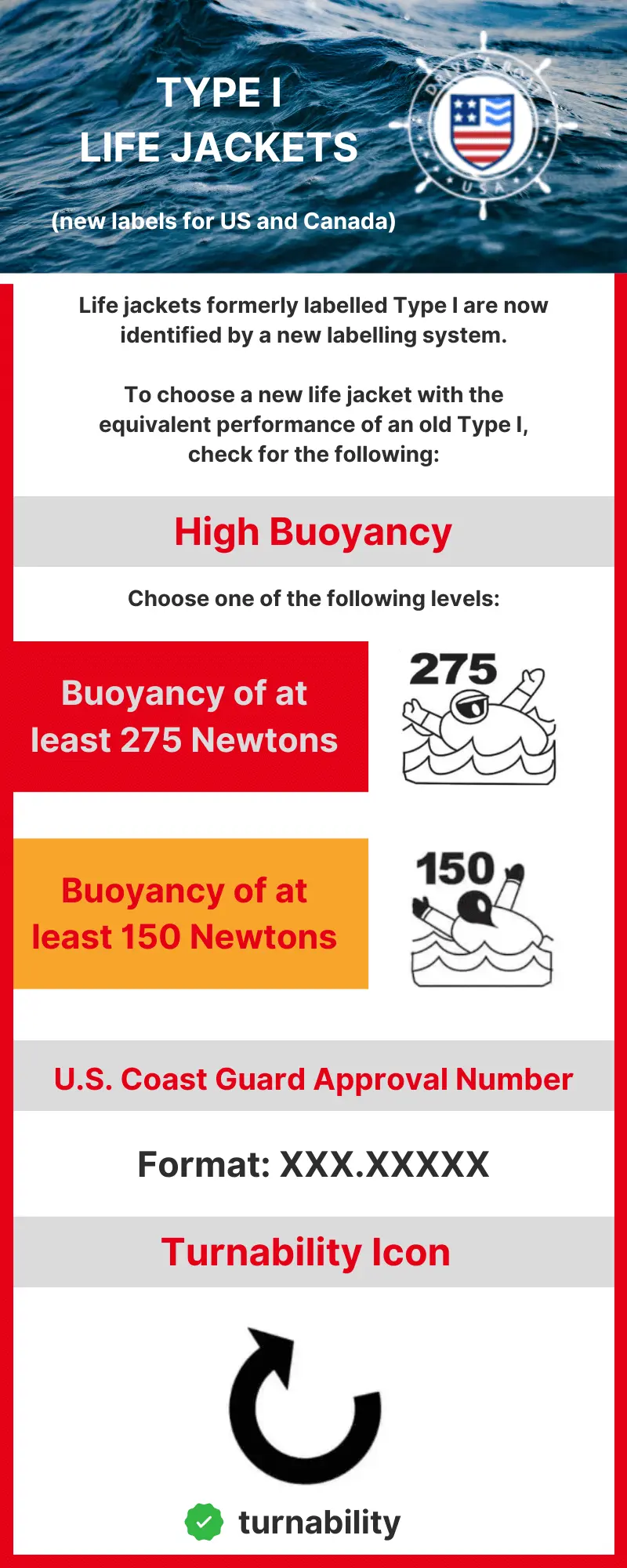What Is a Type I Life Jacket?
Until recently, life jackets were categorized and labeled according to their type. There were five types, and Type I was designed for the most demanding conditions.
Today, any Type I life jacket that is still serviceable can be used safely.
However, if you are looking to replace an old Type I in 2025, you will need to look for a life jacket labelled according to Level.
Key Takeaways
- Type I Life Jackets were originally for the most demanding offshore conditions.
- New life jacket labels now indicate buoyancy levels instead of Type.
- New offshore life jackets must have a Level 150 or Level 275 label to be safe for offshore conditions.
- Old Type I life jackets can still be used if they are in good condition.
- Always choose the right life jacket for your chosen activity, and make sure it fits properly and is age-appropriate.
Table of Contents
- Type I Life Jackets: Originally Designed for Offshore Safety
- Type I Replaced by Targeted Buoyancy Levels: New Life Jacket Labels In Effect
- Type I Life Jackets Now Indicated by Level 150 & Level 275
- Always Use the Right Life Jacket for Each Person and Activity: Type I or High Buoyancy
- Learn More About Boating Safety from Drive A Boat USA!
Type I Life Jackets: Originally Designed for Offshore Safety
Once the gold standard for offshore safety, the “Type I” life jacket designation is now a term of the past. However, even if new labels do not show ‘type’, you can still use an older life jacket if it is in good working condition, fits properly, and is age-appropriate.
Under the old U.S. Coast Guard classification system, the Type I Personal Flotation Device (PFD) was designed to meet the safety criteria for protecting users under the most demanding conditions:
Maximum buoyancy
Typically offering at least 22 pounds of buoyancy for an adult, it was built to keep the wearer high in the water.
Offshore use
It was the recommended choice for rough, open waters where rescue could be slow to arrive.
Turning capability
A critical feature of the Type I was its design to turn most unconscious wearers from a face-down position to a vertical or slightly backward position, keeping their airway clear of the water.
Less comfort, more protection
This high level of protection often came at the cost of comfort, with Type I life jackets being noticeably bulkier than other types. This also meant that they provided a bit of extra warmth if a person fell overboard into cold water.
In essence, a Type I PFD was an “abandon ship” life jacket, prioritizing survival in the most critical situations.
Type I life jackets came in two sizes
- For adults: at least 22 pounds of buoyancy
- For children: at least 11 pounds of buoyancy
 Type I Replaced By Targeted Buoyancy Levels: New Life Jacket Labels In Effect
Type I Replaced By Targeted Buoyancy Levels: New Life Jacket Labels In Effect
To harmonize with international safety standards and provide users with a more straightforward understanding of a life jacket’s capabilities, the United States and Canada have transitioned to a new “performance level” system.
This new way of labeling different life jacket types and designs focuses on the level of buoyancy and the suitability for specific activities and conditions.
In the new system, Type I refers to all types of wearable personal floatation devices. This classification no longer indicates high performance; instead, you must look at the level and activity icons on the label.
What is shown on new life jacket labels?
New life jackets are labelled with performance levels indicated by numbers, in addition to special icons showing:
- Buoyancy
- The size of person the PFD will protect
- Whether the PFD will turn a person on their back if unconscious
- The water sports the life jacket can and cannot be used for.
Type I Life Jackets Now Indicated by Level 150 & Level 275
If you are looking for the same level of protection that a Type I life jacket once offered, you should now be looking for a PFD with a performance level of at least 150 Newtons.
- The Level 150 PFD is generally considered the modern equivalent to the performance of a legacy Type I life jacket. It is designed for offshore use, has a high degree of buoyancy, and is intended to turn an unconscious person to a safe, face-up position in the water, even when wearing foul-weather gear.
- For the most extreme conditions and for those wearing heavy work gear or equipment, the Level 275 PFD offers the highest buoyancy and turning capability.
Always Use the Right Life Jacket for Each Person and Activity: Type I or High Buoyancy
While the old Type I life jackets are no longer found in stores, the same basic rules still apply when choosing the right PFD for each person and activity:
- Always wear a correctly-sized PFD.
- Always follow the rules, and never use a PFD that does not have a label.
- Inflatable PFDs are not permitted for some age groups and activities.
- Your life jacket must be United States Coast Guard approved to guarantee performance.
- There are special rules for life jackets for children.
- Keep in mind that life jackets wear out over time, and check that your PFD is in good working order before using it.
Learn More About Boating Safety from Drive A Boat USA!
Join millions of boaters in California, New York and Florida who have learned all about boating safety regulations from Drive A Boat USA. It only takes a few hours to complete our 100% online boater safety course and exam. Get started on your state-specific boating certification today!


 Type I Replaced By Targeted Buoyancy Levels: New Life Jacket Labels In Effect
Type I Replaced By Targeted Buoyancy Levels: New Life Jacket Labels In Effect